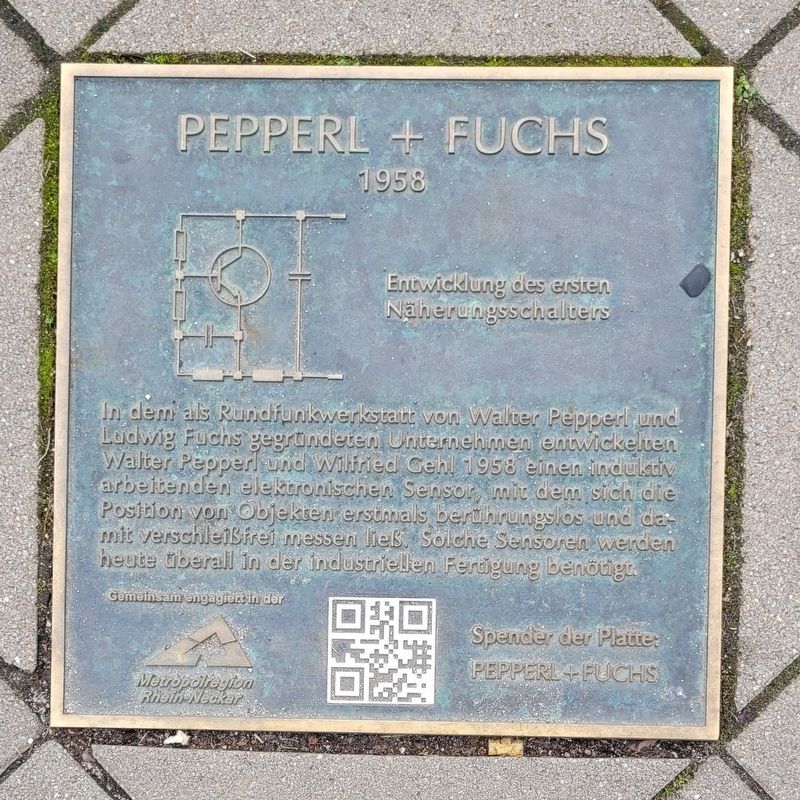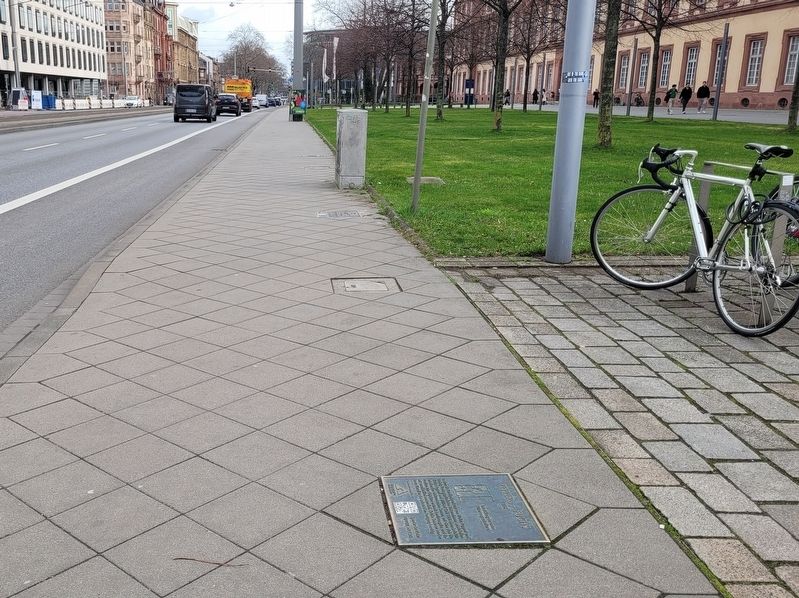Quadrate in Mannheim, Baden-Württemberg, Germany — Central Europe
Pepperl+Fuchs
1958
Entwicklung des ersten Näherungsschalters
In dem als Rundfunkwerkstatt von Walter Pepperl und Ludwig Fuchs gegründeten Unternehmen entwickelten Walter Pepperl und Wilfried Gehl 1958 einen induktiv arbeitenden elektronischen Sensor, mit dem sich die Position von Objekten erstmals berührungslos und damit verschleißfrei messen ließ. Solche Sensoren werden heute überall in der industriellen Fertigung benötigt.
Development of the first proximity switch
In 1958, in the company founded as a radio workshop by Walter Pepperl and Ludwig Fuchs, Walter Pepperl and Wilfried Gehl developed an inductive electronic sensor with which the position of objects could be measured for the first time without contact and thus without wear. Such sensors are needed everywhere in industrial production today.
Erected by Metropolregion Rhein-Neckar and Pepperl+Fuchs.
Topics. This historical marker is listed in these topic lists: Industry & Commerce • Science & Medicine. A significant historical year for this entry is 1958.
Location. 49° 29.037′ N, 8° 27.831′ E. Marker is in Mannheim, Baden-Württemberg. It is in Quadrate. Marker is on Bismarckstraße just east of Kurpfalzstraße, on the right when traveling east. The marker is located along the sidewalk in front of the University of Mannheim. Touch for map. Marker is at or near this postal address: B37 20-40, Mannheim BW 68161, Germany. Touch for directions.
Other nearby markers. At least 8 other markers are within walking distance of this marker. SAP (here, next to this marker); Mannheim-Gen (a few steps from this marker); Rudolf Fuchs (a few steps from this marker); Prof. Dr.-Ing. Karl Friedrich Marguerre (a few steps from this marker); Julius Hatry (a few steps from this marker); Hugo Stotz (within shouting distance of this marker); Bulldog (within shouting distance of this marker); Nobelpreis für Medizin / Nobel Prize for Medicine (within shouting distance of this marker). Touch for a list and map of all markers in Mannheim.
More about this marker. The bronze plaque is one of 42 plaques set up along the “Electoral Palatinate Mile of Innovations” in front of Mannheim Palace.
Also see . . . Walter Pepperl, Ludwig Fuchs, Wilfried Gehl. Kurpfälzer Mile of Innovations
When radio equipment stops working in the postwar era, it is often due to defective power transformers, whose insulating paper layers between the windings often become damp, causing short circuits. New transformers are in short supply, but copper wire is available on the market. Pepperl, a radio technician, therefore decides to make replacement transformers himself and builds a winding machine from used parts. He converted a bicycle speedometer into a winding counter and used the crank drive from an old telephone set.(Submitted on February 23, 2024, by James Hulse of Medina, Texas.)
Credits. This page was last revised on February 23, 2024. It was originally submitted on February 23, 2024, by James Hulse of Medina, Texas. This page has been viewed 42 times since then. Photos: 1, 2. submitted on February 23, 2024, by James Hulse of Medina, Texas.

